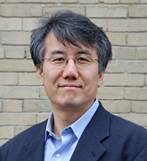为营造浓厚的学术氛围,由材料科学与工程学院主办,高分子加工研究所承办的“材智荟·大讲堂”讲坛,将邀请加拿大多伦多大学Chul B. Park院士为广大研究生作学术报告,欢迎广大师生积极参加!
报告主题∶Effect of Nanofibers in Polymer Processing
报告人:Chul B. Park教授
报告时间∶2024年7月20日上午 9:00-11:00
报告地点:主校区材料科学与工程学院教学楼207报告厅
报告人简介:Prof Chul B. Park received his PhD from MIT in 1993. He is Distinguished
 Professor of Microcellular Engineered Plastics at University of Toronto. He has an international recognition in polymer foam area. He has published more than 2000 papers, including over 515 journal papers and four books with 29,000 Scopus Citations and 93 Scopus H-index. Prof Park serves as Editor-in-Chief for Journal of Cellular Plastics. He has been inducted as an Academician Fellow into 6 academies including the Chinese Academy of Engineering, the Academy of Sciences of the Royal Society of Canada, and the Korean Academy of Science and Technology. He is also a Fellow of 6 other professional societies including the Society of Plastics Engineers.
Professor of Microcellular Engineered Plastics at University of Toronto. He has an international recognition in polymer foam area. He has published more than 2000 papers, including over 515 journal papers and four books with 29,000 Scopus Citations and 93 Scopus H-index. Prof Park serves as Editor-in-Chief for Journal of Cellular Plastics. He has been inducted as an Academician Fellow into 6 academies including the Chinese Academy of Engineering, the Academy of Sciences of the Royal Society of Canada, and the Korean Academy of Science and Technology. He is also a Fellow of 6 other professional societies including the Society of Plastics Engineers.
Chul B. Park,加拿大多伦多大学教授、微孔发泡实验室主任,加拿大皇家科学院和工程院院士、欧洲科学院外籍院士、中国工程院外籍院士。CB Park教授博士毕业于麻省理工学院,是加拿大先进聚合物加工技术及聚合物微孔发泡材料应用领域的首席科学家,同时还是FRSC、FKAST、FAAAS、FSPE、FCAE、FASME、FEIC及FCSME等多个专业协会的会员。
CB Park教授主要从事聚合物及其复合材料的微孔发泡成型及工业化应用研究,先后发表论文2000余篇,包括515篇期刊论文,出版专著4本,获批授权专利20余项,H指数93。
报告摘要:The nanofibrils’ effect on the crystallization kinetics, foaming behaviors, and mechanical properties of polymer/nanofibril composites will be presented. Especially, a new toughening strategy with 1-3% nanofibril rubber inclusion is devised and its efficiency is evaluated against the classical counterpart. Massive improvement in macroscopic fracture behaviour is observed as the tensile fracture toughness is markedly enhanced at a comparatively low rubber loading while the yield strength and elastic modulus are only marginally decreased. In our attempt to explain the superior toughening efficiency of rubber nanofibrillar network, we propose a collective toughening mechanism. Morphological observation of the polymer nanocomposites indicates that the drastic change in fracture behaviour of the samples is ascribed to the physical nanofiber rubber network, above their toughening percolation threshold, observed throughout the entire composite system. The facile and cost-effective processes which were used for the production of the micro/nano-fibrillar composite blends makes this approach ideal for the improvement of the properties of a wide variety of thermoplastics.